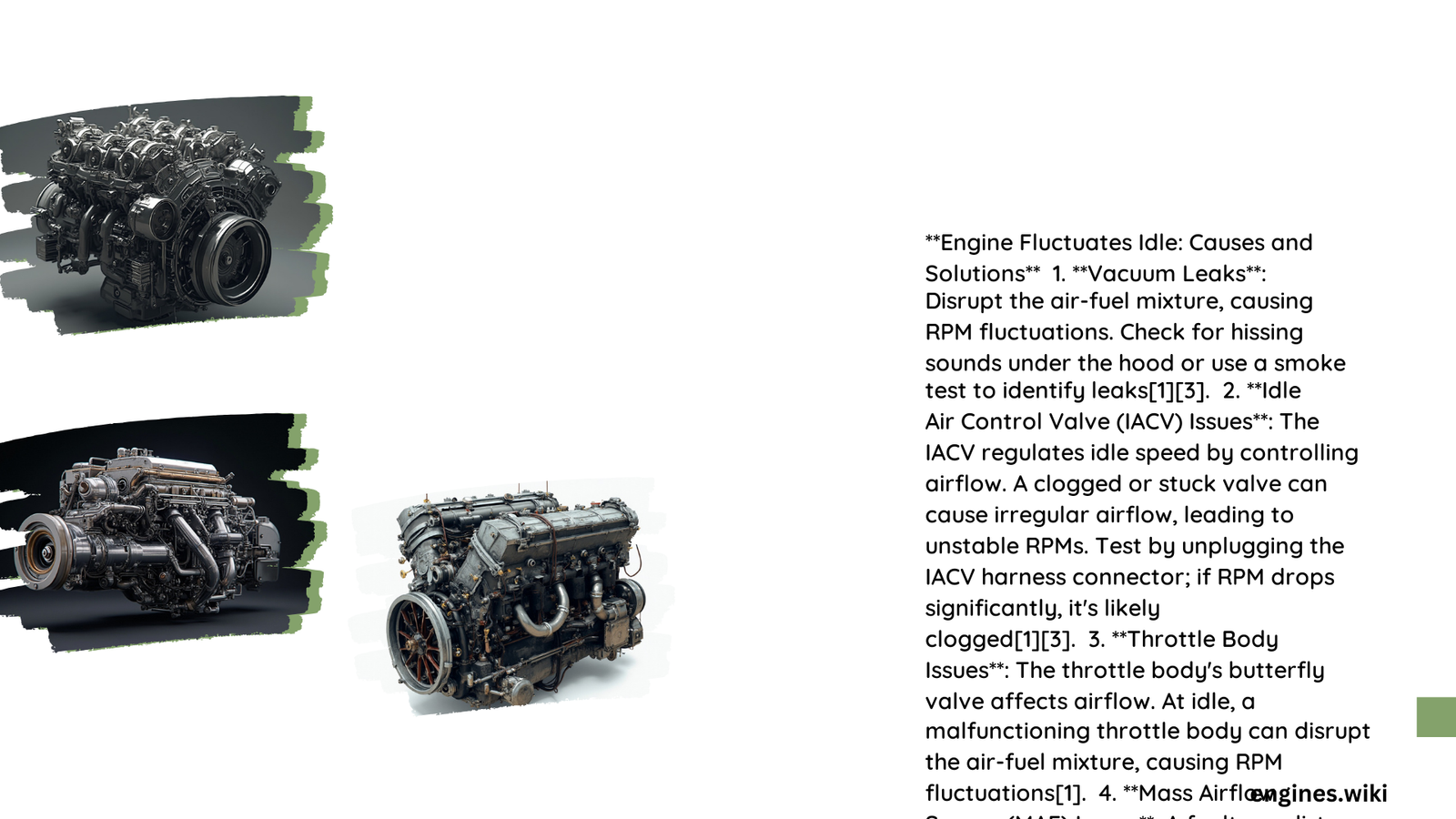When your vehicle’s engine experiences unpredictable RPM variations during idle, it signals potential underlying mechanical issues that demand immediate attention. Engine idle fluctuations can stem from multiple complex factors, ranging from sensor malfunctions to vacuum system disruptions, potentially compromising your vehicle’s overall performance and fuel efficiency.
What Causes Engine to Fluctuate at Idle?
Common Symptoms of Unstable Engine Idle
| Symptom | Potential Cause | Severity |
|---|---|---|
| Irregular RPM | Idle Air Control Valve Failure | High |
| Hissing Sounds | Vacuum System Leaks | Medium |
| Unexpected Stalling | Multiple Sensor Malfunctions | Critical |
Why Does Engine RPM Become Unstable?
Idle Air Control Valve Malfunction
When the Idle Air Control Valve (IACV) fails, your engine experiences significant airflow disruptions. Key indicators include:
- Sudden RPM drops below 500
- Unexpected surges above 1000 RPM
- Inconsistent engine performance during stationary operation
Vacuum System Integrity
Vacuum leaks represent another critical factor in engine idle instability. These leaks can:
- Introduce unmetered air into the engine
- Disrupt precise air-fuel mixture ratios
- Trigger check engine warning lights
Diagnostic Approach for Engine Idle Fluctuations
Required Diagnostic Tools
- OBD2 scanner
- Multimeter
- Vacuum leak detection kit
- Brake cleaner
Step-by-Step Troubleshooting Process
- Code Scanning
- Connect OBD2 scanner
- Retrieve and document trouble codes
-
Analyze specific error indicators
-
Visual Inspection
- Check vacuum hoses for visible damage
- Inspect electrical connections
-
Examine sensor conditions
-
Sensor Evaluation
- Test Mass Airflow Sensor (MAF)
- Verify Throttle Position Sensor (TPS) functionality
- Assess Idle Air Control Valve performance
Critical Components Affecting Idle Stability
Mass Airflow Sensor Diagnostics
- Symptoms of MAF failure:
- Erratic idle
- Poor acceleration
- Reduced fuel efficiency
Spark Plug Condition
Worn or damaged spark plugs can significantly contribute to idle fluctuations by:
– Causing intermittent misfires
– Disrupting combustion consistency
– Generating uneven engine performance
Professional Recommendations
When to Seek Professional Help
- Persistent idle fluctuations after initial diagnostics
- Complex sensor or electrical system issues
- Advanced diagnostic requirements
Preventive Maintenance Strategies
- Regular sensor cleaning
- Timely spark plug replacement
- Consistent vacuum system inspection
- Annual comprehensive engine diagnostics
Cost Considerations
| Repair Type | Estimated Cost Range |
|---|---|
| Sensor Replacement | $100 – $400 |
| Vacuum System Repair | $50 – $250 |
| Complete Diagnostic | $80 – $150 |
Final Insights
Engine idle fluctuations demand systematic investigation. While some issues can be resolved through DIY methods, complex problems require professional automotive expertise.

